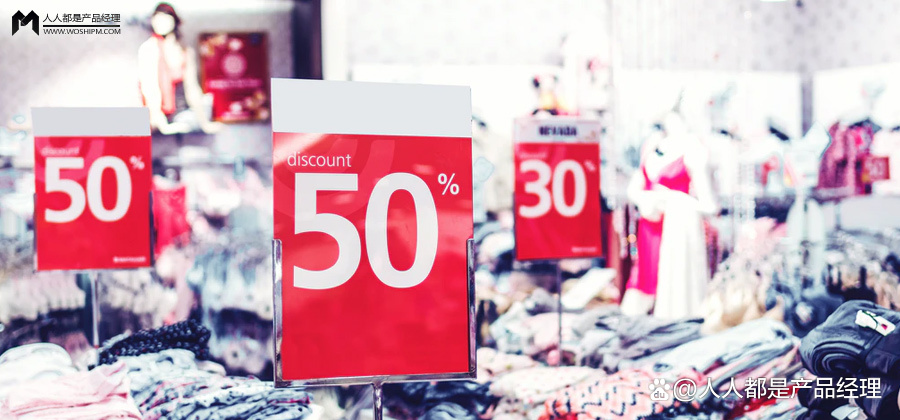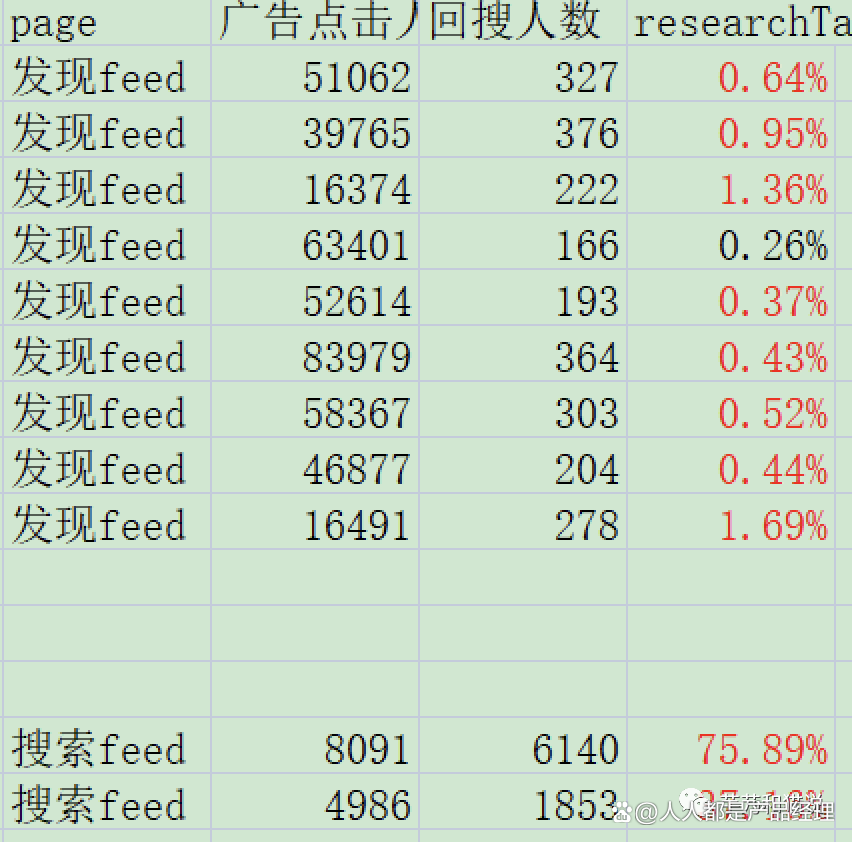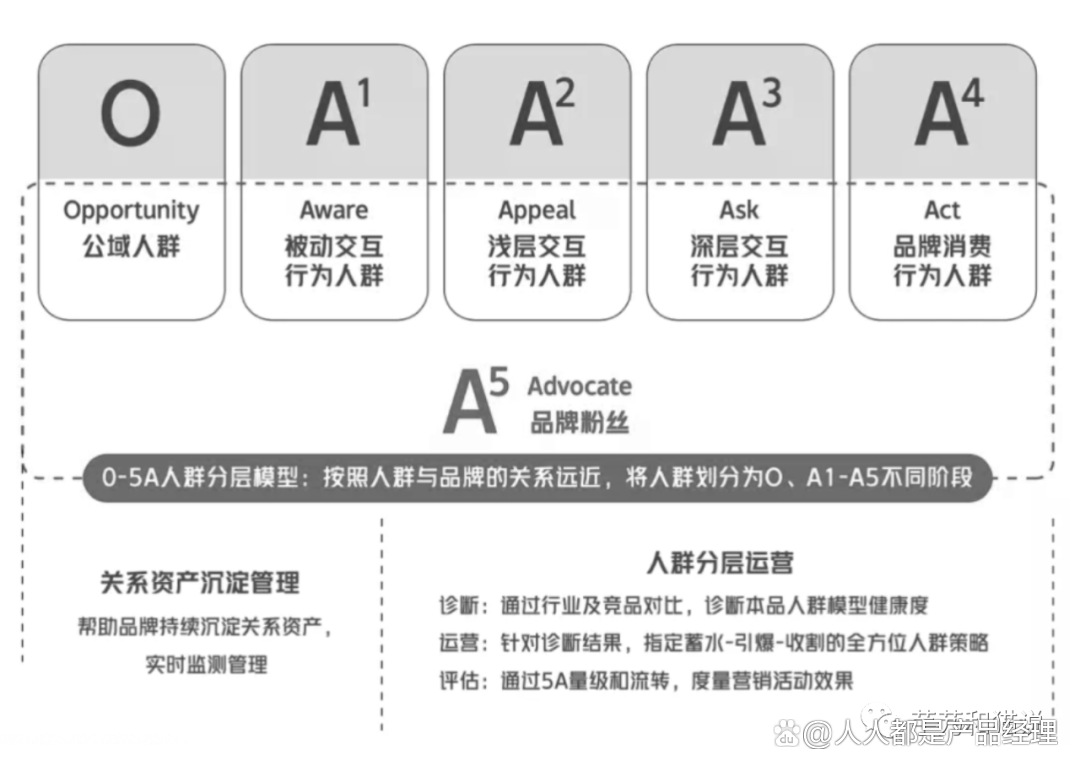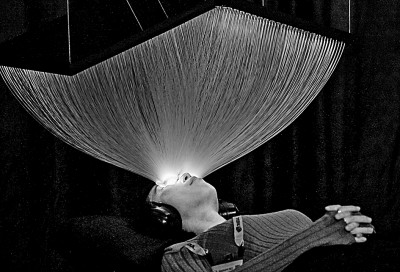Forget the target user, find the target scene
Author:Everyone is a product manager Time:2022.08.12
Edit Introduction: How to make users more willing to choose your product? Perhaps, when targeting the target crowd, you also need to shift your eyes to the "scenario" factor; if you want to plan explosive products, the "scenario" factor may also be your "catalyst". In this article, the author made a marketing strategy interpretation of the "scenario" and looked at it together.

Recently, I encountered three problems, which is worth exploring:
Online launch, the platform generally gives crowd bags or various orientation dimensions. Is this directional method really effective or self -comfort? A national -level mobile phone brand spent hundreds of millions of costs on the brand advertisement in Douyin. The trader feedback said that there was no obvious effect. What was the reason? What kind of products do you make during the low desire period of consumption? The above three issues can be attributed to one essentially:
How to let users take the initiative to choose products or services?
Note that it is not [how to find a user], but [how to make users choose products or services].
Judging from the general thinking of marketing, regardless of effect, brand release or product planning, you must first find [target user] to achieve the next step in the transformation:
Marketing staff spend great energy to find out the target users. The purpose is to divide the market overall into different groups with similarity. These groups may be divided according to the potential value of the brand, or they may be divided according to whether their address is queried. The typical criteria for distinguishing these markets are the differences between a group for certain types or brands. What are the differences between population statistics and consumption psychology, or the media used in a group.
Regardless of product planning or marketing, the first step is to find the target group as the starting point of all the follow -up work.
However, is this method still valid at the moment?
Is the target crowd that spend great efforts and the consumer decisions that this group may make, is there an inevitable connection, and is there another more efficient way?
This is a problem in this discussion, which will be divided into the following modules:
Personality is still the scene, which has a greater impact on people's decisions; the form of placement of the crowd bag is really useful or useful; the success or failure of advertising depends on the scene; how to plan explosive products during the downturn of consumption. 1. Personality or scene, which has a greater influence on people's decisions
There is a well -known behavioral psychology test that wants to verify: whether it is personality or scenario, which has greater influence on decision -making.
The experiment tested 40 pastors. Before the experiment, through the motivation of filling in the monastery, they judged whether they had a helpless nature for helping others or self -redemption.
After the experiment started, the experiments asked them to set off to participate in a recording show.
Before they set off, one -third of them were told that you were late, that is, it was set in a state of extremely rushing, and one third of the people were placed in a moderate hurrying state- —Will was told that "ready to be ready, they can pass." One -third of the other informing the time is very generous.
In the road they passed, there was a man who was pretending to be down, making cough and moaning.
As a result, in the extremely rushing state, the proportion of rescue assistance was only 10%, and in the moderate and not rush state, the proportion of stays was 45%and 63%, respectively. Whether you are willing to reach out to help, and whether you have the nature of helping others, there is no strong correlation.
The experimental results prove that the final behavior performance is objective scene rather than personality.
Similar experimental psychologists have recorded many times, and the conclusions are basically the same.
In a sense, this view has broken the still -rooted view: first confirm a core target audience, focusing on communication around them. That is, in real decision -making, personality is weaker than the influence of the scene.
Second, the form of the directional crowd bag, is it really useful or useful
Unless the extreme vertical segmentation crowd, the targeted crowd bags (most of them have to increase the price), the effect is extremely limited.
How did this experience come?
Of course, it was spent to spend money.
Almost all from APP to ordinary fast -moving products to electronic digital classes.
Content community platforms, such as Douyin Kuaishou WeChat Weibo B Station Xiaohongshu, etc., targeted labels based on crowd attributes or interests, such as [City White -collar], [Town Youth], [Fitness Loss] and so on. These seemingly blurred correlation with consumer decisions, but the real locking of these labels does not improve the efficiency of launch.
For example, as a shopping community platform -Xiaohongshu, the crowd label and shopping interest should be very related. However, we use one of the indicators to measure the efficiency- [Receiving Search rate] as the indicator (refer to the proportion of the brand keywords again after seeing the content of the grass), even if there are more orientation dimensions, the return searches have not been searched without the return rate. Obviously increased.
The crowd label is set to the return rate of launch. Compared with the search rate of SEO (search card position), the gap is extremely obvious, and the maximum energy difference is more than 300 times.

Test data of a brand Xiaohongshu Putting Test Data
The medium -length video platform (Ai Youteng B, etc.) usually label according to the user's viewing preference. However, [What entertainment content you love to see] and [may make consumer decisions] are indeed nothing to be related. Buying a price to the crowd is likely to buy a loneliness.
what is the reason?
In addition to the experiment of behavior psychology, the influence of personality is weaker than the influence of the scene. In fact, in modern society, it is actually increasingly difficult to define the so -called [target crowd]: 1) [target group] of population significance. The environment is easier, and the source of information is more scattered. Even if the age, region, and income are similar, everyone's information environment is completely different. Everyone is a complex complex.
2) In the era of information explosion, every time in time, people's ideas and needs may change with the environment and contacts, and according to the principle of recent causes -people are often affected by the latest stimuli in terms of dealing things, and people are often affected by the latest stimulus, and they are often affected by the latest stimulus. When we kept accepting various new stimuli, we were no longer a calm lake, but a rushing waterfall. It means that at this time and then, it cannot be covered in a [label]:
The same group of people desperately wanted to drink cola while holding the house, but kept self -discipline during normal times. In the same person, when he saw an article about takeaway riders, he was very able to rejoice with the rider, but turned to find that his takeaway was half an hour late, and he couldn't help sending a bad comment. 3) Consumption decisions are personal irrational decisions. Relative rational decision -making (occupation, marriage, etc.), in daily shopping choices, people generally start personal [low participation] processing mode (less rational than imagined). Using an unconscious mechanism to make a choice, it is more likely to be subject to the scene The influence of non -individual objective conditions.
"Human beings are not rational animals, but are good at rationalized animals."
The traditional user reaching theory believes that once the target group is determined, the promotion efficiency is guaranteed. But in fact, we often caught us in many misunderstandings, that is, in order to obtain [more accurate] crowd label, forgetting [scene] is a more important influence factor.
3. The success or failure of advertising depends on the scene
Back to the second question at the beginning: a mobile phone brand puts the brand -type information flow advertisement in Douyin, and places the advertisement through the target crowd portrait. The feedback effect is not good.
Similar issues, Ulike's CEO also mentioned in public sharing: online development just let everyone see Ulike, but cannot remember.
In fact, this is not a crowd or a situation.
The people who brush the vibrato are very different, but the scene is more similar:
In the process of brushing short videos, people are in a huge amount of information, and generally relax and relax, the information flow enters the mind continuously.
In this scenario, we are surrounded by countless content, and there are new and completely different new stimuli (including content and various advertisements). This makes people unconsciously immune to the content.
For mobile phones, the industry has high technical maturity, severe homogeneity, and the product itself is difficult to differentiate visual presentation effects. It is difficult to produce [strong irritating] content. Stimulation, it is difficult to produce strong memory and interest, so the effect is often poor.
What is more suitable for mobile advertising is the advertising scenario of [time and space exclusiveness]. The content of information faced by users is less and easier to pay attention to advertising information.
Back to Douyin, for most brands, Douyin is an engine from 0 to 1. Through the degree of interest in content, people who have high intentions and interested people have repeatedly launched the closed -loop conversion of advertising.
Then, after these people are harvested, which brands can continue to use a large -scale investment (non -effect advertisement) to achieve the transformation goals?
In other words, according to Douyin from A1 to A5, the A3-A5 users have been transformed. Which advertisers are more likely to obtain A1 users from the public domain?
You need to go back to the scene to see:

In the high -density stimulation of short video information content, which advertising content can provide strong stimulus+high attention.
Basically attributed to two categories:
First, the low price of the category causes impulse consumption, and the price itself is a source of excitement. Second, novelty+powerful: such as very tempting fresh makeup, appliances with immediate effects. In the previous one, the A5 can be transformed directly from the public domain, which is amazing; the latter, novel+strong shock, forming high memory, or good interest, which is easy to cause interaction or active search. Through algorithm capture, you can do secondary reaching and multi -round grass transformation of these people.
Of course, the two are superimposed and the effect is excellent.
In the process of jumping out of Douyin, in the process of brand advertising, many people default: the more accurate the target group of the target group, the greater the advertising efficiency.
In fact, removing a very special population, geographical characteristics or interest attributes, from the actual effectiveness of advertising, the influence of the scene is more than the crowd lock.
For example, vertical apps are often considered accurate access channels, such as recruitment APPs, veins corresponding to the workplace population, and taxi software for commuting. In fact, these APP tool attributes are clear. Users are used to use them as users quickly, and they lack the adaptive scene. The effect is very poor.
So what kind of scene is most suitable for advertising, remember four words, the important level from high to low:
Happiness, focus, high frequency, low secret.
No, the first is [Happiness], which is greater than the realm.
This is also a misunderstanding of traffic thinking or sales thinking. It is believed that [field] is the most important -where there is traffic, there is a conversion. In fact, behind the traffic is real person, human nature is the password that should be most concerned about. Psychologists have found that when the same advertisement, when consumers feel happy, 21%of people like this advertisement. When they feel unhappy, only 13%of the advertisements are like Whether the influence of advertising likes has reached 62%.
Psychologist Daniel Carman explained to this that when we are full of emotions and a happy mood, there is usually no danger around us, so the necessity of critical thinking is weakened. The possibility of advertising information will greatly increase.
Small Tips: Don't put content ads in murder or tragedy, even if it is popular.
The second is focusing. The more concentrated attention, the stronger the advertising power.
Experiments have proved that the probability of advertising with a long exposure to advertising is 6 times the possibility of advertising. The possibility of remembering the details of the advertisement is 4 times, and the possibility of the brand information in the advertisement accurately is even more It's 13 times higher.
Therefore, the subway advertisement seems extremely cost -effective, but the effect is very poor. The pedestrians hurried to the subway, and the time to pay attention to the advertisement is almost negligible.
Happiness+concentration, is it easy to understand the above two points superimposed, even if the Spring Festival Gala and super bowls ads are not expensive, but the effect is amazing -it is even higher than the vast majority of advertising ROI.
Third and fourth is well understood. High -frequency improves familiarity, deepen memory, and low information density makes advertisements easier to stand out.
The same is true of effect advertisements. For example, Ruixing, in the operation and transformation of users in private domains, has specially created a set of scenarios-behavior data models, which promote the corresponding products according to time, space, weather, and user's mood.
[We will recommend different coffee and services to users according to the influence of different urban temperatures and weather. Weather like rainy days, many users like to buy coffee together. At this time, Ruixing will invest more takeaway. It will also invest more sharing vouchers and avoid some delivery fees. .
Fourth, when consumption is sluggish, explosive planning should start from the scene
What kind of products are more likely to be explosive during the period when consumer desire is insufficient?
The answer is still in the scene.
We usually use the division of the target group to design products. However, the hidden hypothesis here is that the [target crowd] should be interested in the product, or [natural] is a population with demand.
However, during the period of excess supply and excessive demand, this assumption is not established:
The target group is easy to find, but the needs of the target group are difficult to accurately divide and classify; people achieve a goal or meet a demand, too much choice, how can products make products one of them? Therefore, what product is designed, you should not only start from the habit of the target group, but you should also cut into the [purchase scene], that is, under what scenario of the user to make a choice:
Under what scenario users are exposed to the product (realm); which touches that trigger the purchase (emotion) after contact; whether the suitable scenario is easy to be [identified] and [capture]. At the beginning of the product, it should be [assumption] in the corresponding scenario, simulate potential customers, and find the purchase scenario.
For example, Chillmore shower gel, mainly to perform fragrance, cooperates with the two top flavors raw material companies, Robert and Finmine. There is a [Listening to the Wind on the Creek], which is known as the blue wind of Zuma Long; the other [Western Loose House] is [Songlin in the West Lake in the West Lake in the late autumn] taste.
Bath gel products are bound to be the Red Sea. This product can be sold out not only because of the segmentation of the scene, but these scenarios are extremely easy to identify and capture:
The scenario of fragrance shower gel is to naturally have a faint body incense (some perfumes can be solemn), and maintain a beautiful mood and state on daily life.
Is this part of the crowd or a student or a student or a small town youth? There may be, but it is not important. Because cutting in from the target scene is much more efficient than finding these people:
When walking shopping, cycling on weekends, foraging in shops, daily dating, I hope to keep a faint fragrance.
Where to find the scene?
In the content community, there are countless rich and a lot of rich shops, travel, daily life VLOG and other contents every day. They can naturally integrate the scene of [Keeping Switch]. In such scenarios, it is also very easy to infect and transform.
Besides, a product, Nitetronic adds a snoring pillow, the price is very high, about 3,000 yuan, but the sales volume is good.
In the sharing of the trader, at the beginning of this product design, it was positioned to achieve transformation through interest e -commerce. To this end, the effect of monitoring snoring was designed to use airbags to make the head side rotation, so that the [stop snoring effect is obvious] Note that it is not [user can perceive effect], but [video visible effect], so as to maximize the stimulus effect of short video content.
In the past, the design ideas of the product were to first define the target group, and then design the product. According to the target group to find the promotion method and channel of the product, the problem is that there is no inevitable connection between [target crowd] and [consumer decision]. Production of a product that the target group may use, but cannot leverage the purchase in the appropriate scene.
But starting from the shopping scenario, find the most factor that affects emotions, the scene that can match the resources, and push the product design. In essence, it can make full use of corporate resources (which scenarios can reach) and trigger the desire of the scene in the scene into the design in advance, making it easier to obtain [consumer active selection]. Finally, there is a suggestion to plan the product:
Imagine when will your product be reached and purchased for the first time?
Are you searching for the search and e -commerce? Is there a bright selling point (title) or explosive price in front of you?
Do you grow grass in the content e -commerce? Is there a strong novel and visual presentation?
Is it sitting on the rack on the convenience store. Is there a dazzling packaging design?
Finally, summarize:
Traditional market work is to define content and channels from the target group, but information fragmented and complex social environmental marketing, [target group attribute] is difficult to linked to [consumer decision], capture [target scenario] to catch [target crowds, the target group ] The efficiency is much higher; in the advertising, the crowd label provided by the platform seems to improve the accuracy, but it is not actually the case; it is suitable for making brand types on a short video platform: the first category is low; the second strong novelty; Good advertisements depends on the scene, four words -happiness, focus, high frequency, low secret, importance from high to low; during the period of consumption downturn, in the order of product design [reverse], from [consumer decision -making Scenario] Push up the product design.
Author: Lanlan; Public account: Taro and Cat said (ID: taro_cat)
This article is published by @taro and cats that everyone is the product manager, and it is prohibited to reprint
The question map is from UNSPLASH, based on the CC0 protocol.
- END -
"Who Moves my cheese" "sniffing" and "hurried" may not like cheese

The fable story created by American writer Spencer Johnson Who moved my cheese? In...
Artificial intelligence, technology is ready, what about us?

In recent years, artificial intelligence technology represented by deep learning a...